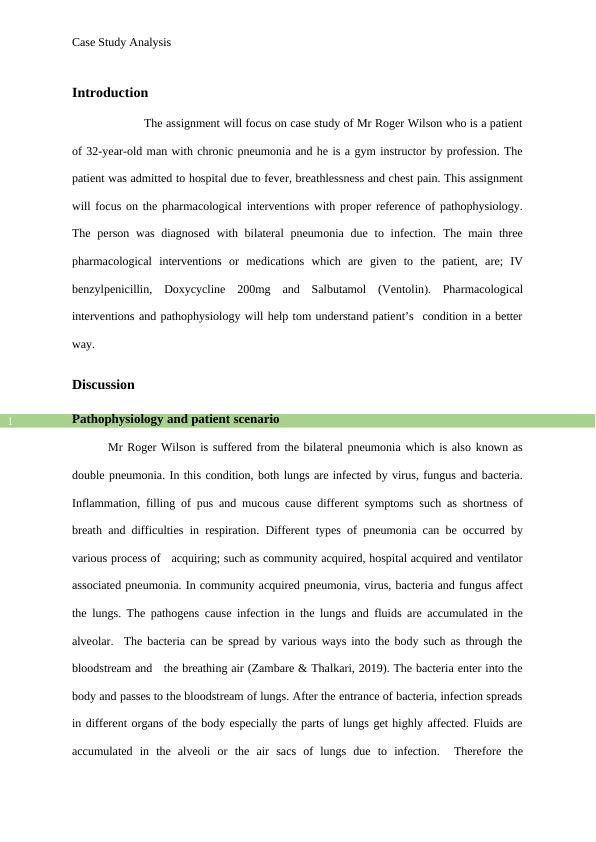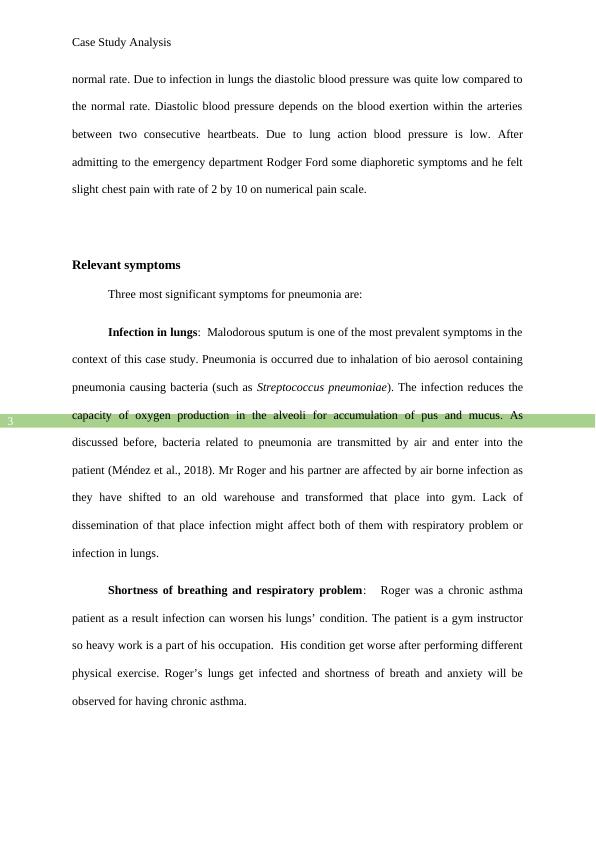Pathophysiology and Patient Scenario | Case Study
This assignment is a written paper case study that requires an exploration of pathophysiology and pharmacology relating to a specific case. The assignment focuses on demonstrating an understanding and application of knowledge learned in the topic of Pathophysiology and Pharmacology.
11 Pages2905 Words78 Views
Added on 2022-08-09
Pathophysiology and Patient Scenario | Case Study
This assignment is a written paper case study that requires an exploration of pathophysiology and pharmacology relating to a specific case. The assignment focuses on demonstrating an understanding and application of knowledge learned in the topic of Pathophysiology and Pharmacology.
Added on 2022-08-09
ShareRelated Documents
End of preview
Want to access all the pages? Upload your documents or become a member.
Pathophysiology and Pharmacology: Pneumonia
|10
|2863
|13
Pathophysiology and Pharmacology
|12
|3402
|359
Case Study Analysis | Pathophysiology
|11
|3051
|18
ASSIGNMENT ON PATHOPHYSIOLOGY AND PHARMACOLOGY.
|13
|3607
|16
Pathophysiology Case Study 2022
|5
|814
|23
Shortness of Breath | Case Study
|2
|659
|15




